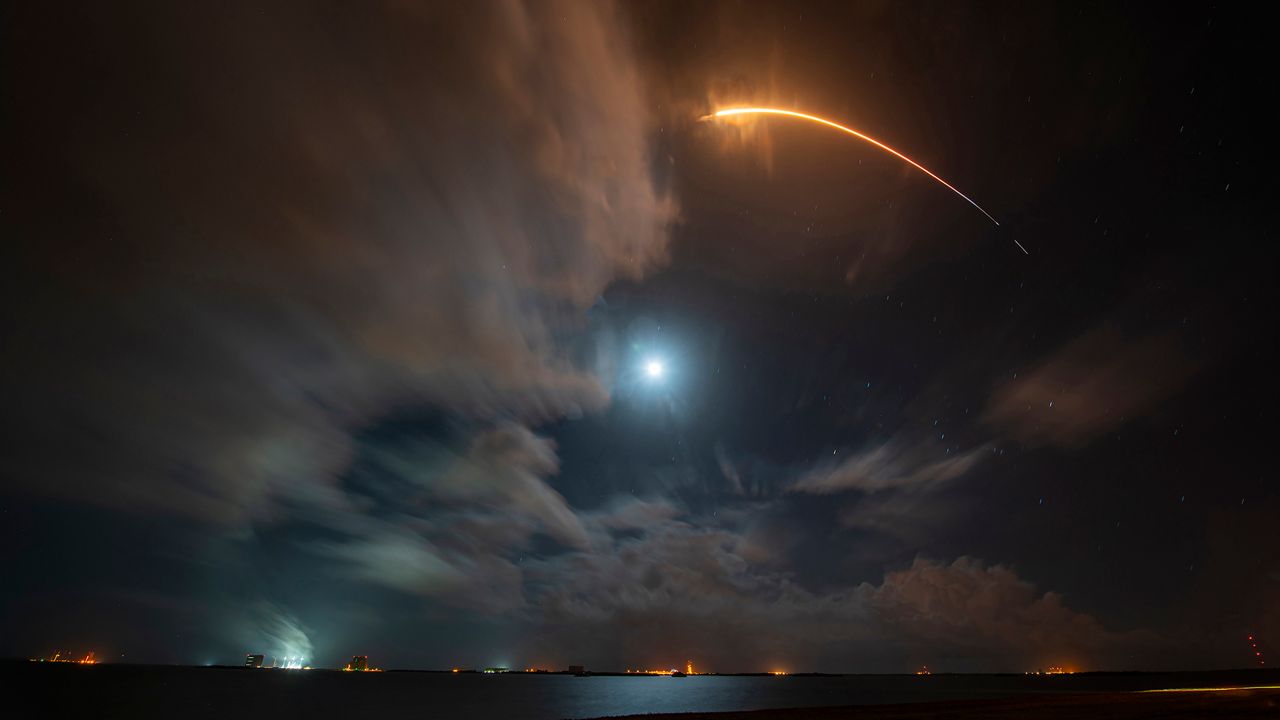CAPE CANAVERAL SPACE FORCE — Even though weather experts gave a 50/50 chance of liftoff, SpaceX was able to successfully launch more than 20 Starlink satellites into orbit early Thursday morning.
What You Need To Know
- SpaceX launched another group Starlink satellites early Thursday morning
- The 45th Weather Squadron had given a 50% chance of good liftoff weather
Liftoff! pic.twitter.com/nRp6TPUEo1
— SpaceX (@SpaceX) October 5, 2023
SpaceX's Falcon 9 rocket left Space Lunch Complex 40 at Cape Canaveral Space Force Station to send more than 20 Starlink satellites into the deep black, according to SpaceX. But the odds of it happening were not all that great.
Liftoff had to be delayed a few times after weather experts gave the launch a 50/50 chance, but the Falcon 9 rocket finally got off the ground at 1:36 a.m. ET. It was originally scheduled for 10:45 p.m. ET with four backup launch attempts starting from 11:38 p.m. ET to 1:57 p.m. ET.
While SpaceX did not clearly state why the attempts were pushed back, it did post on X at one point that its teams were "keeping an eye on weather conditions".
Less than 45 minutes until Falcon 9’s launch of 22 @Starlink satellites from Florida. Teams are keeping an eye on weather conditions at the launch site
— SpaceX (@SpaceX) October 5, 2023
The 45th Weather Squadron had given a 50% chance of good liftoff weather for the Wednesday evening launch, with concerns being the cumulus cloud rule and liftoff winds.
“… the main weather threat for the primary and delay day launch attempts will be cumulus clouds associated with onshore-moving showers, with breezy liftoff winds an additional concern on the primary day,” the squadron stated on Tuesday.
Learn about NASA’s weather criteria for the Falcon 9 rocket.
If the launch was completely scrubbed, the next attempt would have been for Thursday evening, Oct. 5.
Going up
Before sending up Starlink 6-21 mission, first-stage booster B1076 has seven flights under its belt.
- CRS-26
- OneWeb Flight 16
- Intelsat IS-40e
- Starlink Group 6-1 mission
- Starlink Group 6-3 mission
- Starlink Group 6-6 mission
- Starlink Group 6-14 mission
After the stage separation of the Falcon 9 rocket, the first-stage booster landed on the droneship Just Read the Instructions that will be out in the Atlantic Ocean.
Falcon 9’s first stage has landed on the Just Read the Instructions droneship pic.twitter.com/E33mVRzE4n
— SpaceX (@SpaceX) October 5, 2023
About the mission
The Starlink 6-21 mission saw 22 satellites being launched into low-Earth orbit, joining the thousands already there and will eventually provide internet access to many places on Earth.
The Starlink company is owned by SpaceX.
Before the launch, Harvard-Smithsonian Center for Astrophysics’ Dr. Jonathan McDowell has recorded the current number of Starlink satellites.
- 4,842 are in orbit
- 4,812 in working order
- 4,258 are in operational orbit



